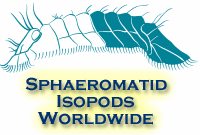| Abstract |
The complete nucleotide sequence of the SSU rRNA gene from the soil bug, Armadillidium vulgare (Crustacea, Isopoda), was determined. It is 3214 bp long, with a GC content of 56.3%. It is not only the longest SSU rRNA gene among Crustacea but also longer than any other SSU rRNA gene except that of the strepsipteran insect, Xenos vesparum (3316 bp). The unusually long sequence of this species is explained by the long sequences of variable regions V4 and V7, which make up more than half of the total length. RT-PCR analysis of these two regions showed that the long sequences also exist in the mature rRNA and sequence simplicity analysis revealed the presence of slippage motifs in these two regions. The putative secondary structure of the rRNA is typical for eukaryotes except for the length and shape variations of the V2, V4, V7, and V9 regions. Each of the V2, V4, and V7 regions was elongated, while the V9 region was shortened. In V2, two bulges, located between helix 8 and helix 9 and between helix 9 and helix 10, were elongated. In V4, stem E23-3 was dramatically expanded, with several small branched stems. In V7, stem 43 was branched and expanded. Comparisons with the unusually long SSU rRNAs of other organisms imply that the increase in total length of SSU rRNA is due mainly to expansion in the V4 and V7 regions. |

















